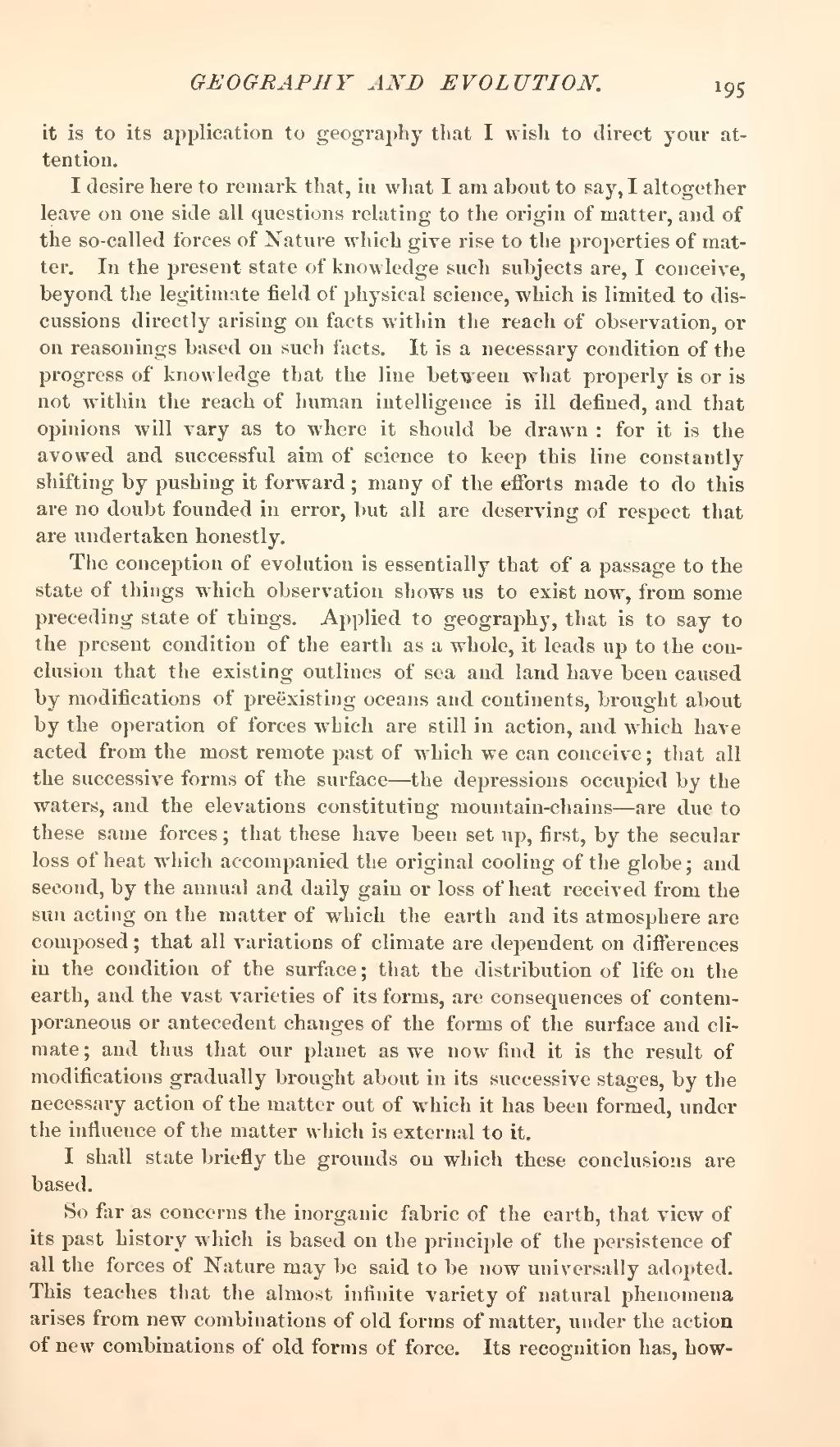it is to its application to geography that I wish to direct your attention.
I desire here to remark that, in what I am about to say, I altogether leave on one side all questions relating to the origin of matter, and of the so-called forces of Nature which give rise to the properties of matter. In the present state of knowledge such subjects are, I conceive, beyond the legitimate field of physical science, which is limited to discussions directly arising on facts within the reach of observation, or on reasonings based on such facts. It is a necessary condition of the progress of knowledge that the line between what properly is or is not within the reach of human intelligence is ill defined, and that opinions will vary as to where it should be drawn: for it is the avowed and successful aim of science to keep this line constantly shifting by pushing it forward; many of the efforts made to do this are no doubt founded in error, but all are deserving of respect that are undertaken honestly.
The conception of evolution is essentially that of a passage to the state of things which observation shows us to exist now, from some preceding state of things. Applied to geography, that is to say to the present condition of the earth as a whole, it leads up to the conclusion that the existing outlines of sea and land have been caused by modifications of preëxisting oceans and continents, brought about by the operation of forces which are still in action, and which have acted from the most remote past of which we can conceive; that all the successive forms of the surface—the depressions occupied by the waters, and the elevations constituting mountain-chains—are due to these same forces; that these have been set up, first, by the secular loss of heat which accompanied the original cooling of the globe; and second, by the annual and daily gain or loss of heat received from the sun acting on the matter of which the earth and its atmosphere are composed; that all variations of climate are dependent on differences in the condition of the surface; that the distribution of life on the earth, and the vast varieties of its forms, are consequences of contemporaneous or antecedent changes of the forms of the surface and climate; and thus that our planet as we now find it is the result of modifications gradually brought about in its successive stages, by the necessary action of the matter out of which it has been formed, under the influence of the matter which is external to it.
I shall state briefly the grounds on which these conclusions are based.
So far as concerns the inorganic fabric of the earth, that view of its past history which is based on the principle of the persistence of all the forces of Nature may be said to be now universally adopted. This teaches that the almost infinite variety of natural phenomena arises from new combinations of old forms of matter, under the action of new combinations of old forms of force. Its recognition has, how-

